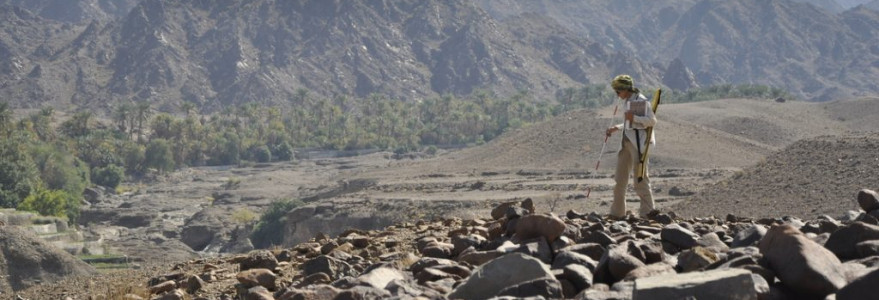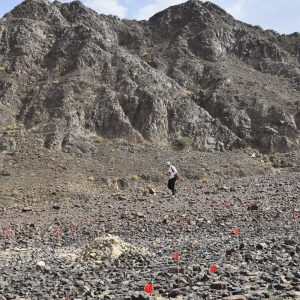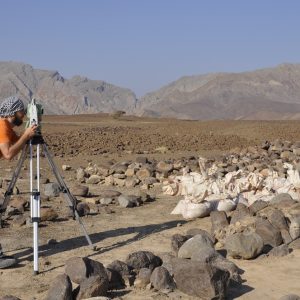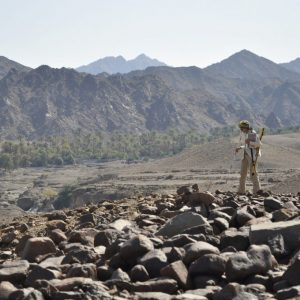An expedition of the Polish Centre of Mediterranean Archaeology of the University of Warsaw completed the season of archaeological research in northern Oman. The archaeologists discovered traces of ancient metallurgy and remnants of Bronze and Iron Age settlements.
The research focused around the so-called Qumayrah micro-region, where an expedition of the Polish Centre of Mediterranean Archaeology of the University of Warsaw (PCMA UW) has been working as the first Polish archaeological team in the country since 2016. To date, the team has recorded dozens of previously unknown archaeological sites of various chronologies, from the Neolithic period to pre-modern times.
The expedition from the PCMA UW carried out the final season of documentation as part of the project “Development of Bronze and Iron Age Settlement in the Mountains of Northern Oman” led by Prof. Piotr Bieliński. Another part of the team, headed by Dr Agnieszka Pieńkowska, worked on the project “The role of copper mining in shaping Bronze Age settlements in northern Oman. Archaeological and geological research in the mountain region of Qumayrah”.
Iron Age settlement
As part of the first project, an archaeological and geological field survey and test excavations were conducted at ten sites. More than fifty structures from different periods of the Bronze Age (Umm an-Nar and Wadi Suq cultures) and several Iron Age structures were documented along with dozens of features from later periods or of undetermined chronology. Among the oldest, dated to the Early Bronze Age, or the so-called Umm an-Nar period (c. 2600–2000 BCE), were round stone towers typical of this culture tower tombs.
“In general, traces of settlement from the Umm an-Nar period seem to be most prevalent in the study area. This shows that even a region located in a mountainous hinterland valley could have participated in the economic and demographic boom that occurred during this period,” Prof. Piotr Bieliński said.
One of the discoveries made by the archaeologists were the remains of an Iron Age settlement.
“This is a settlement, probably featuring an observation or defence tower, located on a hill overlooking the intersection of two valleys, which could have been used by caravans travelling from the large oases in the southern Hajar mountains to the coast of the Gulf of Oman on the one hand, and to centres located in the territory of today’s UAE on the other,” Prof. Bieliński explained. In the excavated part of the site, thirty three rooms were uncovered on an area of about 1400 m2, which belong to adjoining houses arranged on both sides of a narrow street.
“This kind of plan is far removed from the rural character of the settlements one would expect in such a small mountain centre,” Prof. Bieliński emphasised.
Copper ore
Identifying traces of metallurgy in the surroundings of the Qumayrah micro-region was the goal of the second project undertaken during the last season. In this task, the archaeological team was assisted by geologists from the AGH University of Krakow, Polish Geological Institute, and the UW’s Faculty of Geology. The sites that yielded the richest finds related to metal smelting are concentrated around Wadi Salh, where a new complex of sites has been documented.
“There are slag fields measuring about 220 x 50 m, and 25 to 40 cm thick. On ground surface, we found dozens of stone tools used for crushing ore and numerous fragments of furnace walls used for smelting copper. The remains of buildings that most likely served as workshops have also been preserved,” Dr Agnieszka Pieńkowska said. “They must be the remnants of long-term activities related to the processing of copper ore. However, the question of their chronology can only be resolved once the dating materials have been analysed,” the researcher added.







